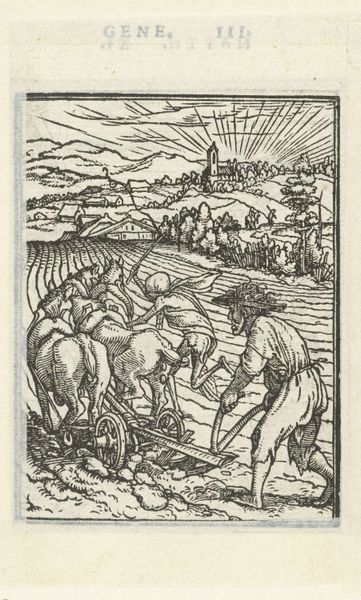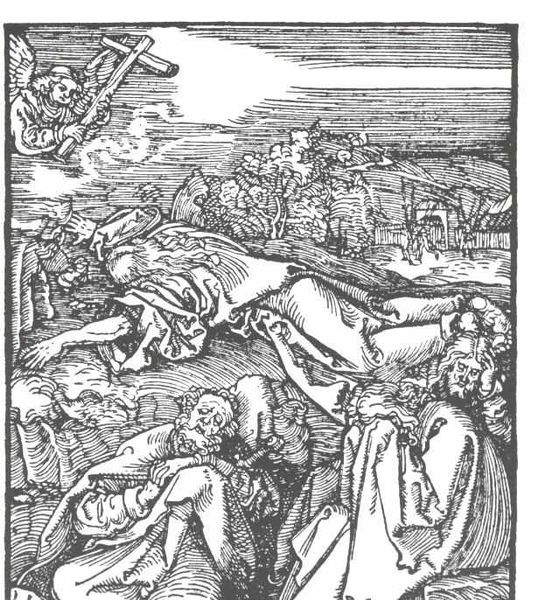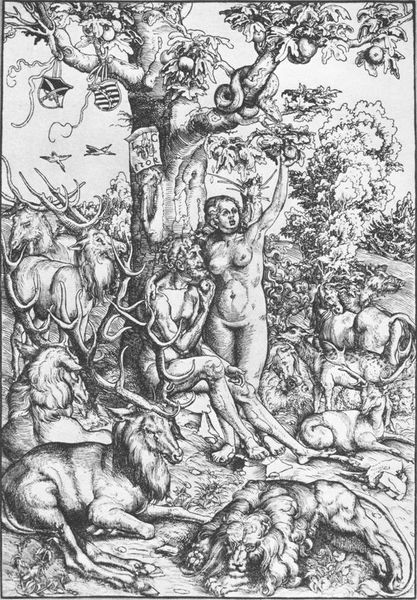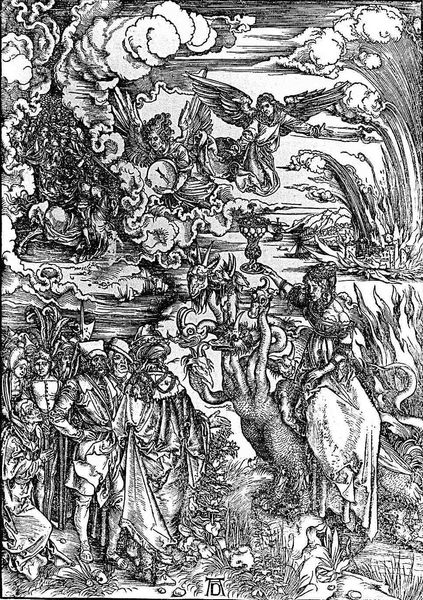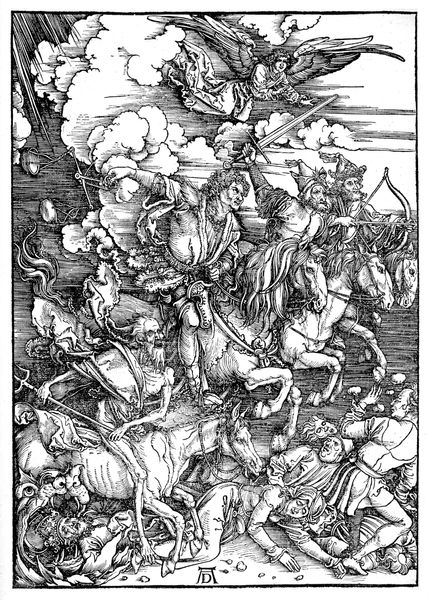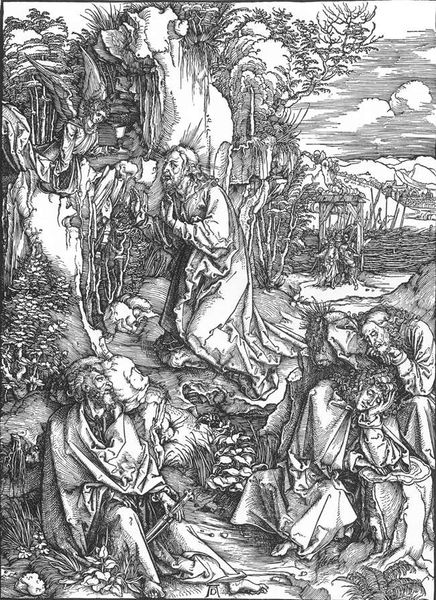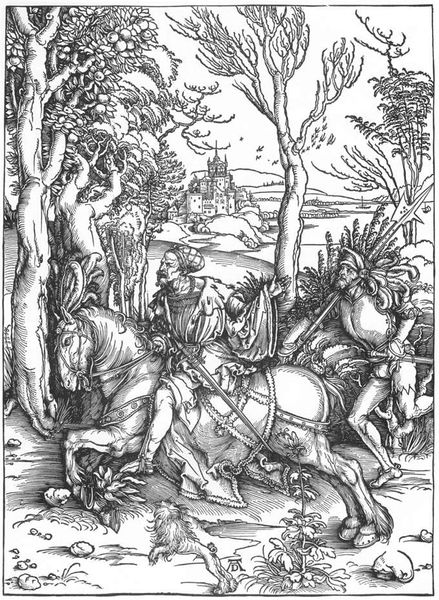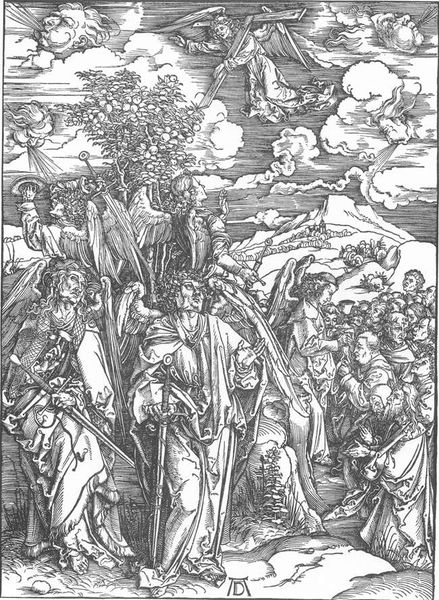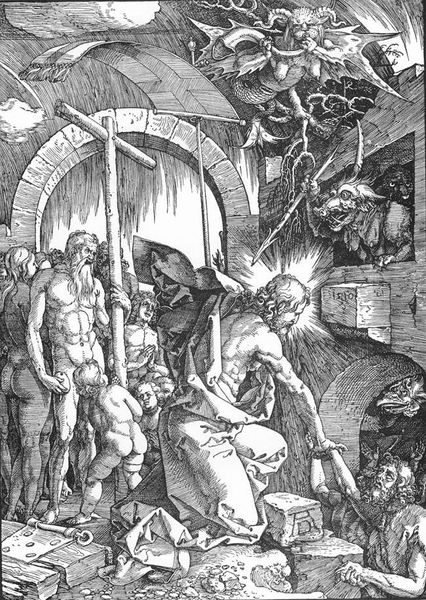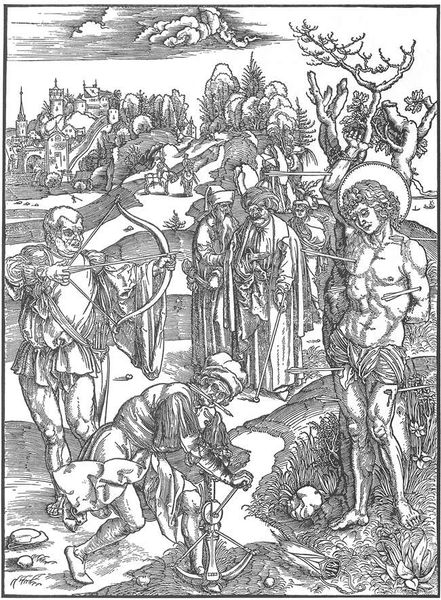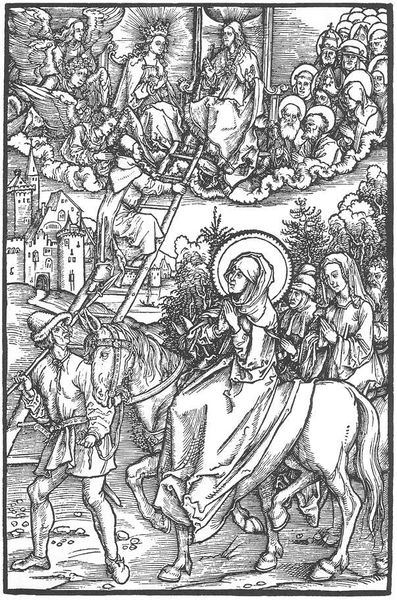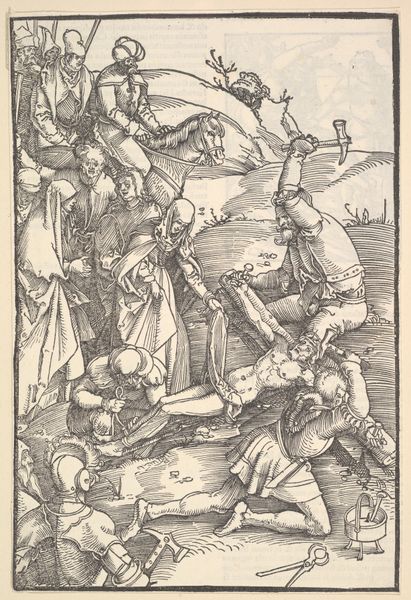
print, woodcut
#
allegories
#
allegory
#
symbol
# print
#
pen illustration
#
death
#
landscape
#
perspective
#
figuration
#
woodcut
#
line
#
northern-renaissance
Dimensions: 65 x 48 cm
Copyright: Public domain
Editor: Here we have Hans Holbein the Younger’s woodcut, "The Plowman," created around 1525. What strikes me immediately is the juxtaposition of the idyllic countryside in the background with the gruesome figure of Death driving the plow. It's quite unsettling. What are your thoughts on how Holbein presents this scene? Curator: This print presents a powerful commentary on labor and mortality in the early 16th century. Notice how Holbein depicts the process of tilling the land, essential for survival, but inextricably linked to death. The material reality of agricultural work – the sweat, the toil, the dependence on animals and tools – is starkly contrasted with the ethereal presence of Death. Editor: That's a great point about the labor itself. The act of plowing, something so essential for life, being driven by death. Was Holbein making a statement about the social structure of the time, perhaps questioning the relationship between labor, death, and the emerging capitalist structures? Curator: Precisely! Consider the social context: the rise of mercantile economies, the displacement of peasants, and the ever-present threat of famine and disease. Holbein, through the medium of the woodcut, democratized access to this critique. Prints were relatively cheap and widely circulated, bringing this contemplation of mortality and material conditions to a broad audience, thereby engaging people from different socio-economic backgrounds. Editor: It’s interesting to consider the work's accessibility based on its medium. Looking at the print, the quality of line is exquisite but I wonder how much the cost and the actual work to create that woodcut impacted Holbein’s design. Curator: A fantastic point. The constraints of the woodcut, the need for sharp lines and clear forms, become part of the work's meaning. Holbein turned those constraints into assets, thereby underlining a very strong contrast between a social allegory of labor and death, and its reproduction. Editor: So, what I’m getting is that through "The Plowman," Holbein not only comments on death but also reveals the profound interconnection of life, labor, and the societal structure of his time, and all by using materials which amplified his message through access. Curator: Exactly! And by emphasizing the materiality of both life and art, Holbein pushes us to contemplate the political dimensions of making art at this historical moment.
Comments
No comments
Be the first to comment and join the conversation on the ultimate creative platform.
